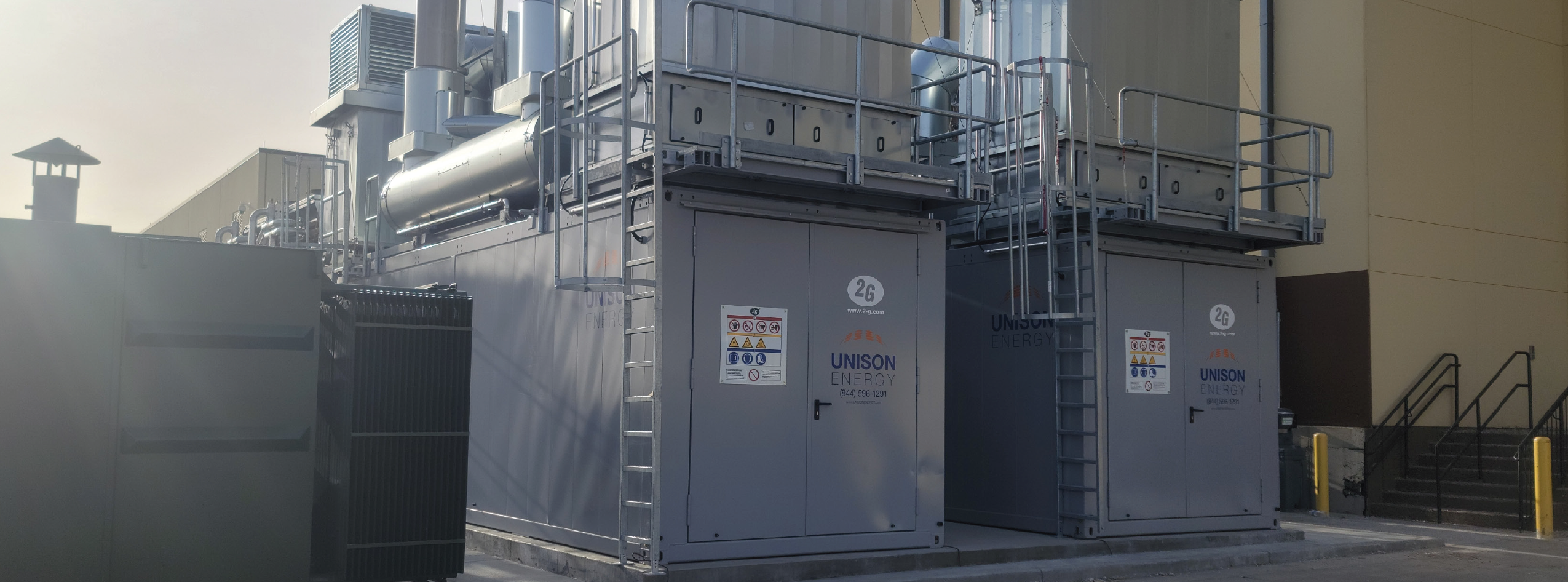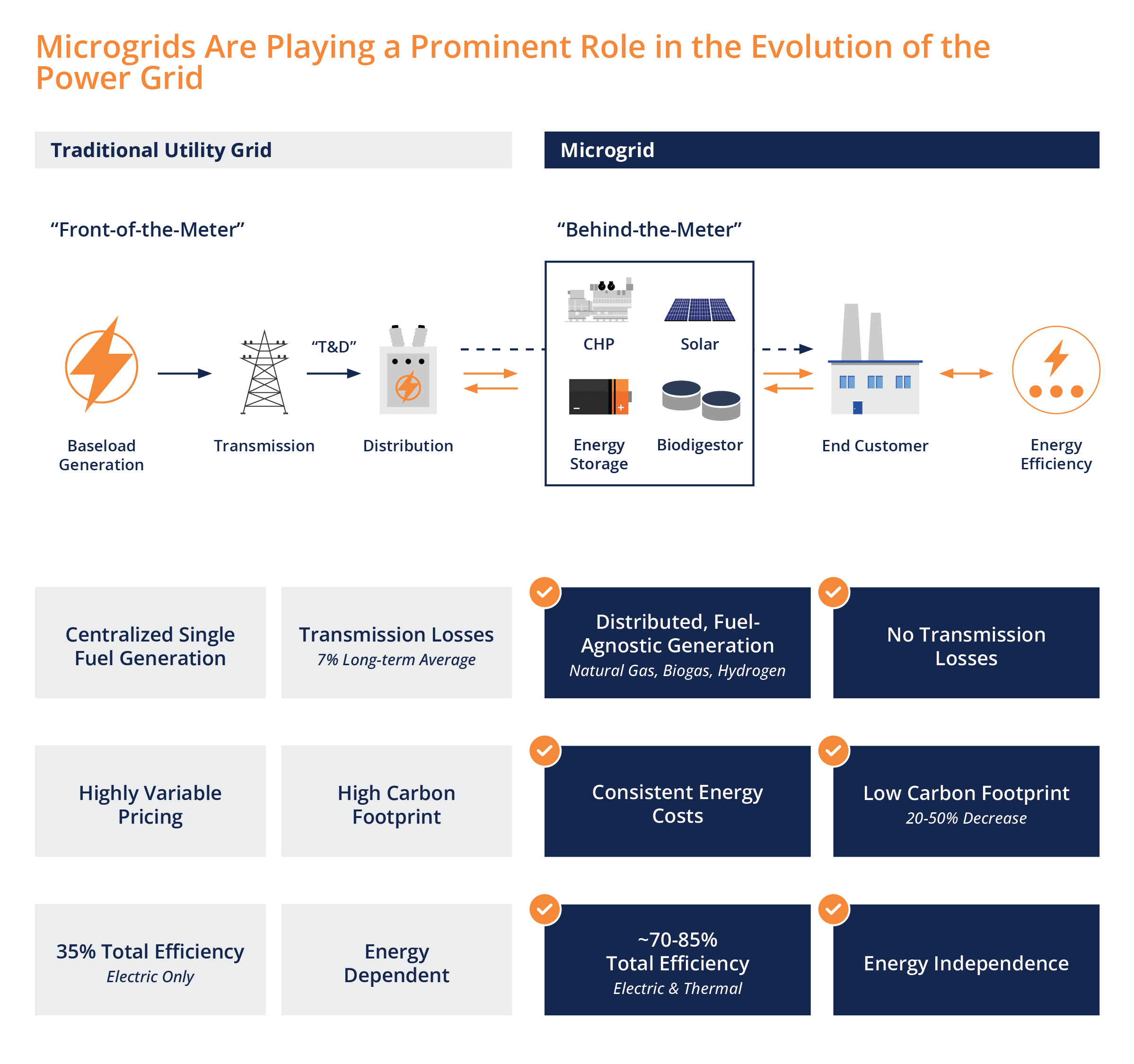Microgrids and Their Role in the Energy Transition

Microgrids provide energy independence, resilience, and efficiency, supporting the Energy Transition by alleviating grid strain and reducing carbon emissions.
With utilities facing challenges due to increased energy consumption and weather-related outages, microgrids are emerging as a critical solution for the larger Energy Transition.
Microgrids are cost-effective and reliable — and a solution for reducing carbon emissions and helping facilities achieve energy independence. They also alleviate pressure on the grid and support aspects of the Energy Transition, such as EV charging, which utilities may struggle to accommodate.
Strains on the Utility Grid
Today’s utility grid is aging and susceptible to outages and price fluctuations, due to increased power demand and extreme weather conditions. A significant portion of the grid’s infrastructure, including transmission lines and equipment, is outdated, with 70% of the grid over 20 years old and much of it built in the 1960s and 1970s.
Utilities are struggling to implement necessary updates in response to the increasing energy demand. Global energy usage surged by 6% between 2020 and 2021, marking an increase of over 1,500 terawatt hours. In the U.S., energy consumption rose by 1.5% over 2021 levels in 2022. This surge in demand is partly due to changes associated with the Energy Transition, such as increased consumer electrification and the growing popularity of EVs.
The rise in EV usage combined with broader electrification is all but certain to further strain the U.S. grid. It remains to be seen whether utility growth, restructuring, and EV charging policies could mitigate the strain and enable the grid to accommodate the anticipated 30% rise in demand over the next two decades.
At the same time, the grid faces challenges from the power usage and pricing spikes that occur during extreme weather events. Winter storms in Texas, heatwaves in California — the past few years have proved the devastating impact of weather events, which can lead to everything from rolling brownouts to deadly power outages that last for days. Drastic weather conditions also led to particularly volatile energy prices in 2022, according to the EIA.
Vulnerabilities of Facilities Connected to the Grid
Facilities connected to the grid are dependent on its stability, which means they face operational and financial risks. They may experience financial impacts, such as capacity charges, due to variable and often unpredictable energy pricing. They also bear the costs of transmission and distribution upgrades, which are added to the energy bill when utilities make infrastructure updates.
Power outages have the potential to disrupt business operations, often resulting in significant financial losses. The financial impact of downtime varies, with many facilities losing thousands of dollars per minute, and industrial sites experiencing even higher costs. According to a 2015 Department of Energy estimate, blackouts cost U.S. businesses around $150 billion annually.
Additionally, facilities aiming for sustainability targets may be hindered by utility usage. Utilities operate at an average efficiency of only 35% and solely provide electricity, resulting in considerable energy waste. Transmission electricity losses average 7% over the long term, further exacerbating the inefficiency of these systems.
Microgrids Relieve the Grid and Benefit Facilities
Microgrids fill critical gaps in today’s aging energy infrastructure. For one, they help alleviate stress on the grid at a local level. This is particularly important during peak energy usage times, such as on hot days when utilities request that consumers reduce power usage. In areas that have these demand response programs, microgrids help shift the burden off the grid while potentially making money for the microgrid owner.
In some cases, independent microgrids can even supply power back to the grid, further generating revenue for the microgrid owner. They can also provide the grid with ancillary services such as frequency control and spinning reserve. An advanced microgrid controller can balance microgrid usage with the rise and fall of electric pricing in order to maximize cost-savings.
Microgrids offer facilities a way to achieve energy independence, mitigating vulnerabilities associated with reliance on the utility grid.
- Resilience: Microgrids can protect facilities from the instability associated with utility dependence, ensuring power reliability and protection against outages when the grid fails.
- Efficiency and Costs: Microgrids are located on site, eliminating transmission losses and supplying more efficient energy. With a total efficiency of 70-85%, which includes both electricity and thermal energy, microgrids are significantly less wasteful than traditional systems. They also offer more control and predictability over energy costs.
- Sustainability: By using cleaner energy sources and more efficient technologies such as cogeneration, microgrids can cut emissions by 20-60%. They can even incorporate alternative fuels for additional emission reductions. Microgrids also support the power demand of initiatives like fleet EV charging stations.
To learn more about Unison Energy’s microgrid solutions, contact us today.
Energy insights, delivered
Subscribe for more content.
Related Blogs

The Energy Crisis in Healthcare: Mitigating Financial Losses Through Reliable Power Solutions
Deadlines for the Inflation Reduction Act
Canadian Carbon Reduction Incentives: What You Should Know
